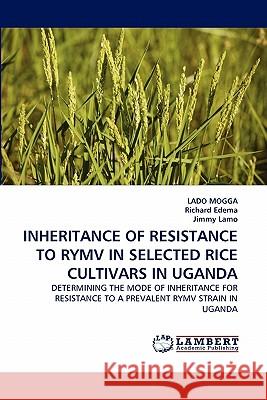Inheritance of Resistance to Rymv in Selected Rice Cultivars in Uganda » książka
Inheritance of Resistance to Rymv in Selected Rice Cultivars in Uganda
ISBN-13: 9783843386838 / Angielski / Miękka / 2011 / 104 str.
Rice yellow mottle sobemovirus is identified as the most destructive viral disease in lowland and upland rice. In this study, the mode of inheritance of resistance to a prevalent RYMV strain in Uganda was determined for resistant lines (upland NERICAs 8, 11, 12, 13 and Gigante (an O. sativa lowland variety) crossed with susceptible lines (lowland NERICAs 4, 6, 10 and IR64 (an O. sativa lowland variety)) in a full diallel mating design. Segregating F2 progeny were planted in field and screen house in -lattice design and inoculated by standard mechanical procedures. Reciprocal effects were significant (P
Rice yellow mottle sobemovirus is identified as the most destructive viral disease in lowland and upland rice. In this study, the mode of inheritance of resistance to a prevalent RYMV strain in Uganda was determined for resistant lines (upland NERICAs 8, 11, 12, 13 and Gigante (an O. sativa lowland variety) crossed with susceptible lines (lowland NERICAs 4, 6, 10 and IR64 (an O. sativa lowland variety)) in a full diallel mating design. Segregating F2 progeny were planted in field and screen house in α-lattice design and inoculated by standard mechanical procedures. Reciprocal effects were significant (P<0.001), GCA effects were significant (P<0.001) and larger than SCA effects. The narrow sense coefficient of genetic determination based on genotype means was relatively high in screen house (76%) and field (84%) experiments. These results suggest additive gene effects were more important than non- additive effects, and selecting in F2 or F3 generations can be effective. Significant reciprocal effects implies the need for careful choice of male and female parents in hybridisation programs to achieve RYMV resistance in the offspring.











